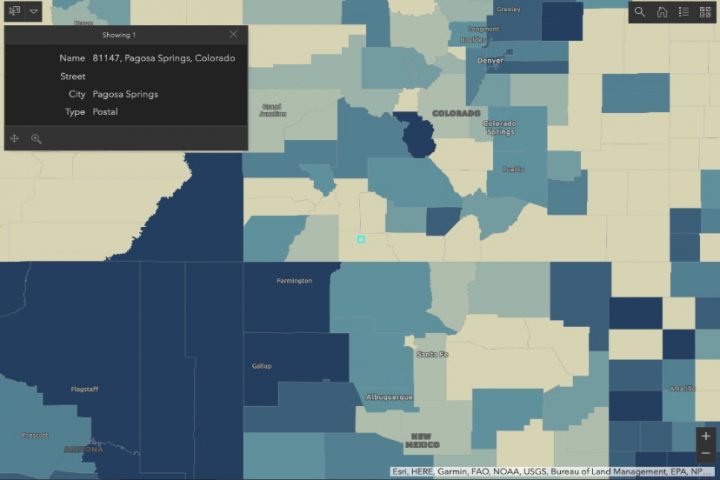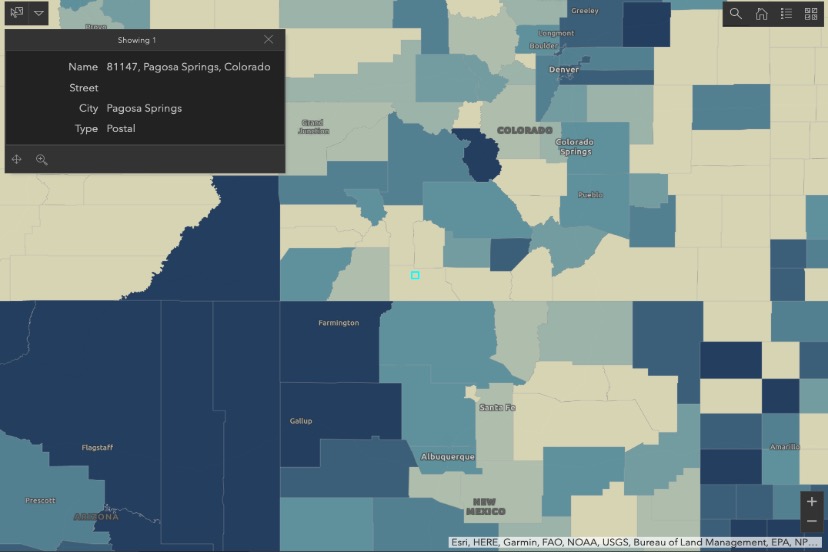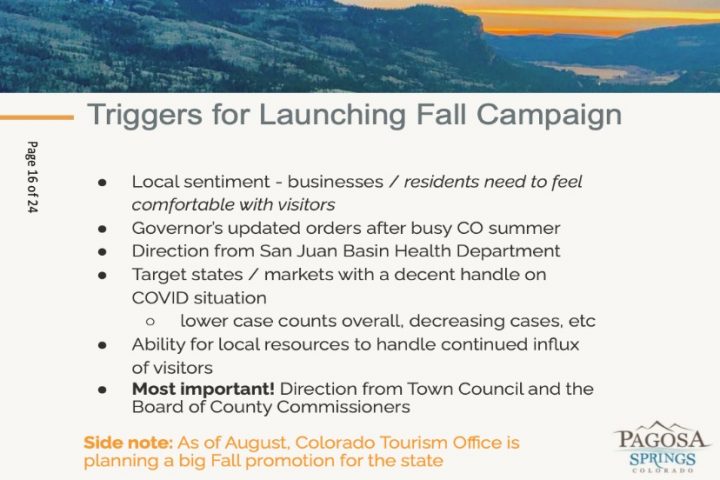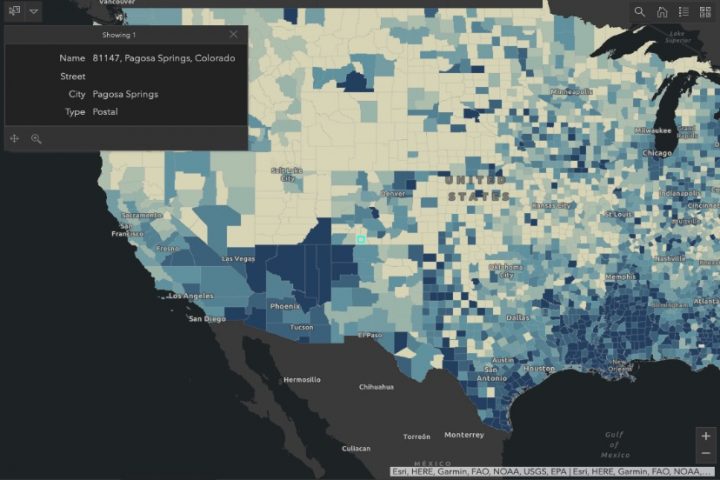After the Town Council heard from Tourism Director Jennie Green and learned that Lodgers Tax collections were only slightly lower this year compared to the first half of 2019, the Council then heard from Town Manager Andrea Phillips that Sales Tax collections were up by about 16% for the first half of the year, compared to the budget predictions from last December.
Not bad for a small mountain town during a nationwide economic meltdown.
But did the community achieve this… based on tourism? Maybe not.
Here’s Jennie Green, discussing the efforts of the Tourism Board on August 20.
“The main purpose of this [report] — and this is going to be brought before Council again, so don’t think this is the end of this conversation — but I wanted to provide an update on the ‘Recovery Plan’.
“And so this was reviewed by the Tourism Board at their last meeting. It was also reviewed by the Economic Recovery Task Force last week. Not going to go through every slide; I’m going to assume that you do not want me to go through every slide. I’ll just give you a couple fo the highlights.”
If our Daily Post readers want to go through the entire slide show, you can download it here.
It seems the Tourism Board has done the bare minimum of marketing this summer? The attached report starts with this explanation:
Visitors have arrived en masse in Pagosa (and throughout the mountain west) this summer. With the increase in visitors, concerns have arisen over keeping the community healthy. Many other tourism destinations are experiencing the same concerns. States continue to see increased numbers of cases and most of our feeder markets have seen the largest increases. It is important to note the difference in messaging versus advertising. Advertising is intended to attract a new audience to Pagosa. What they see after the respond to our ad (clicking, calling, etc), is our messaging…
…Advertising was put on hold on March 13, with the exception of social media, e-newsletters, Google Adwords and contest promotions. Town Council approved the restart to advertise (actively invite visitors) on June 2. A limited paid digital campaign was launched in mid-June. Given the significant increase in tourism (without any current efforts), social media messaging stopped actively encouraging visitation in late June.
The Recovery Plan outlines ongoing tourism recovery efforts for Pagosa and provides triggers for elected officials to determine if a fall campaign is launched. The plan also outlines what the next steps are… once we begin actively inviting visitors, including leveraging our effective branding, using video and imagery that lends itself to serene, peaceful settings, as well as introducing the new Business Engagement & Support program.
The question currently begging for an answer seems to be, “Do we restart our ‘paused’ tourism marketing in the fall? Or when?”
Here are the proposed ‘triggers.’
Most important: Direction from the Town Council and Board of County Commissioners.
The Recovery Plan looks to be carefully thought out, and shows concern for the health of both the business community, and local residents who would just as soon avoid contact with strangers from faraway places where COVID-19 seems a more serious problem than in Archuleta County.
How to balance an 11% unemployment rate with a higher-than-normal rates of COVID deaths in surrounding regions?
Here’s a map from this morning, provided by John Hopkins University, showing the fatality rates per 100,000 residents in US counties. The darkest blue shows the highest death rates. Archuleta County is located by the small turquoise square in the center of the map.

As we see here, the Dine (Navajo) reservation, in the bottom left corner of the map, has been slammed by the pandemic. The darkest blue county to the northest of Pagosa Springs is Chaffee County, home to the resort-and-retirement towns of Salida and Buena Vista. Buena Vista is also home to Buena Vista Correctional Complex, one of the Colorado prisons that had been hit by the pandemic — but which had seen zero fatalities as of the end of July.
For another perspective of the fatality rates, here’s a zoomed-out view from John Hopkins, with Archuleta County again marked by the turquoise square. All of Arizona seems to have been hit especially hard by COVID-19, as has Southern California and Southern Texas. Louisiana and Mississippi are also seeing higher-than-normal death rates.
That’s one side of the question: the actual health effects of the pandemic infection rates.
Another side is psychological. How vulnerable do people feel, wherever they are living?
Another side is a complex mix of economic factors. Do people have enough to eat? Are people getting evicted from their homes as the CARES stimulus checks have been spent, and not renewed?
From an August 25 article by reporter Andrew Kenney, published on the Colorado Public Radio news website:
More Coloradans faced eviction after unemployment checks shrank and bans on eviction expired, but a long-feared tsunami of court cases hasn’t hit the state so far. The state courts accepted filings for more than 1,200 removals throughout July, and nearly 300 more in the first week of August. That was a sharp acceleration from the earlier months of the pandemic when the courts were all but frozen. Still, it’s far short of the state’s typical evictions activity, and it indicates that relatively few landlords moved toward immediate eviction as initial protections expired.
The Colorado Apartment Association argues that the low numbers are a sign of success.
“While evictions may creep closer to normal rates in August, the number of evictions is far, far below Colorado’s averages, and we attribute this to the way the community has stepped forward to help renters,” said Mark Williams, executive vice president for the organization, in a released statement.
According to Mr. Kenney, very few Coloradans have, thus far, completely stopped paying their rent, but without federal or state assistance, September is “is definitely going to be the stress test…”
“I think that we are certainly still concerned that there’s going to be a huge wave of evictions. I think that it’s easy to draw the wrong conclusions from the number of evictions filings we’ve seen so far,” said Javier Mabrey, an attorney working with the COVID-19 Eviction Defense Project. His group and others have seen a growing demand for their free legal services in recent weeks, and he wants Polis to reinstate a ban on evictions.
Housing advocates are arguing that evictions shouldn’t be happening at all during a pandemic. Landlords may be feeling differently, especially if they can’t pay their mortgages.
Meanwhile, requests for help from food pantries in Colorado — statewide — have been increasing…
How are we doing in Pagosa Springs?



